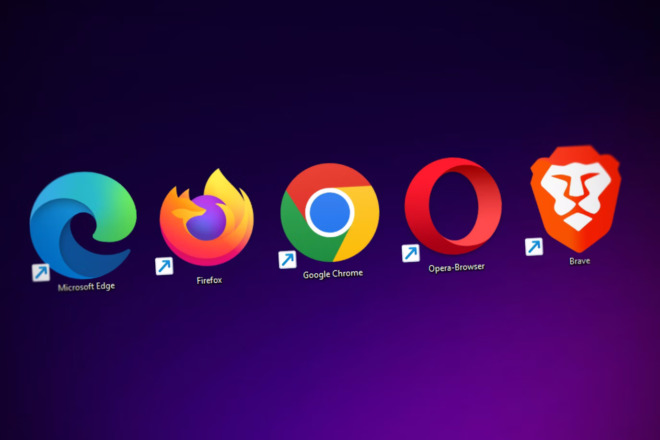Even the most aesthetically pleasing website won’t be very successful if it doesn’t meet the needs and visitors’ expectations. How can you make sure your site is compatible with what your target audience wants? If your conversions are a bit lacking, then your site probably needs a different focus or to be broken into separate landing pages.
There are more than 32.5 million businesses in the United States, although some are more solopreneurships than anything else. As you can imagine, there is a ton of competition to get a limited pool of Internet users’ eyes on millions of websites. Even those sites you aren’t in direct competition with may be a distraction to your site’s visitors. You have to grab their attention from the minute they land on your page and keep it until they convert into customers.
If you want to get and keep your customers, you have to do everything you can to predict their needs even before they know what they are. Here are nine things you can do today to make sure you’re catering to the visitors’ expectations.
1. Update Your Design
While you don’t have to jump on every design trend that comes along, visitors do expect for you to pay attention to your site and update it to reflect current industry trends and needs. Some pages look extremely dated and unprofessional simply because the images or layout haven’t been refreshed in so many years. Design standards do change over time, and people expect you to keep up.
2. State Your UVP Upfront
What is your brand’s unique value proposition (UVP)? What do you have to offer that no other competitor does? You might have the best customer service around, a unique product or more experience than those other companies. Don’t make site visitors guess about your UVP. State what you have to offer and put the words front and center so the user doesn’t have to hunt to figure out what you do and why they should consider you over other options.

Digit offers up their UVP at the very top of their page in a headline that reads “Save money, without thinking about it.” They offer a free 30-day trial of a digital app that analyzes your spending and helps you figure out how to pay off your debt or save for something like a vacation.
3. Check Your Contrast
Visitors expect to be able to actually read what’s on your website. If you don’t have a high contrast between text and background, for example, people may have a hard time even looking at your content, much less absorbing what it says. You should also consider those users with vision impairments, such as color blindness. If you put a darker blue text on a medium blue background, it may all blend into a blur for them.
4. Embrace the 360-Degree View
One thing that really enhances a visitors’ expectations and overall experience with your product is providing a 360-degree view of the product. People expect online shopping experiences to be similar to real-life experiences, and offering them a look at a product from every angle mimics what they’d see if they went to a brick-and-mortar store. Real estate agents have used this technique for years to capture the essence of a home for those who can’t do a physical walkthrough.

HydroWorx offers site visitors an opportunity to take a 360-degree tour. Notice how the call to action (CTA) for the tour is above the fold and placed over an image of one of their pools. When the user clicks on the CTA, the video fills the screen and offers details on their product.
5. Improve Your Navigation
Don’t try to get crazy with your navigation, hide your nav bar or get overly creative with the wording. Navigation should be clear, easy to find and intuitive. You don’t particularly want to draw attention to your navigation structure. It’s simply an old friend that is there if the user needs a helping hand to get to another area on your site. Stick with the expected, such as a home tab on the far left and contact button on the far right.
6. Include Contact Information
If you want to gain the trust of site visitors, include your contact information and make it easy to find. People know where to look for this information (typically top right of the site or in the footer), and they will turn there when they have a question or need assistance. If you make the information difficult to find or don’t include it at all, they may wonder what you’re trying to hide and feel reluctant to part with their hard-earned dollars.

Jack Rosen creates custom cabinets. They place their phone number in the header of their site in big bold numbers. In fact, one of the first things the site visitor sees after the logo is the phone number, since English speakers read left to right. They also include a contact tab in their navigation bar. Click on the link, and you get additional information, such as their street address, hours of operation and a contact form.
7. Speed up Your Site
In a survey of more than 750 consumers and 395 marketers, Unbounce discovered 70% of consumers state the speed of a page impacts whether or not they will buy from an online retailer. Run your site through speed tests such as Pingdom’s and get feedback on things you can change to make your site load more quickly for visitors.
For example, you may need to optimize images or limit scripts on the page. A dedicated server can also speed up response times, so invest in a dedicated server as soon as you can afford it. Test your site from different locations your customers are most likely to come from.
8. Utilize Dynamic Ads
Online marketing has become more and more personal. One thing you can do is to use cookies and track the behavior patterns of your buyers. You can then serve up items similar to ones they’ve purchased in the past or even greet them by name. Another option is tracking behavior and then following up with email marketing campaigns targeted to specific segments of your audience.
9. Make Branding Consistent
If you want site visitors to remember your brand and think of you the next time they need a product or service like yours, you must create consistent branding. Create a style guide for the use of your logo on your website that includes its placement on the page, what size it should be and when to use it. Come up with a typography hierarchy, so every page has a similar look and feel. You should even define the voice of your brand and the type of language you use on your website.
Meeting Your Visitors’ Expectations
To really understand your visitors’ expectations, you must become the user. Flesh out a few buyer personas that represent your typical customers. Use data from current customers, analytics from your website visitors and information about your competitors’ customers to come up with as many details as possible about your typical audience.
Once you have an idea of who the user is, put yourself in their mindset and browse through your site. What speaks to you through their eyes and what is annoying or difficult to use? As a final step, split test any changes to make sure the new features actually resonate with your audience.
About The Author
Eleanor Hecks is the Editor-in-Chief of Designerly Magazine, an online publication dedicated to providing in-depth content from the design and marketing industries. When she's not designing or writing code, you can find her exploring the outdoors with her husband and dog in their RV, burning calories at a local Zumba class, or curled up with a good book with her cats Gem and Cali.
You can find more of Eleanor's work at www.eleanorhecks.com.


